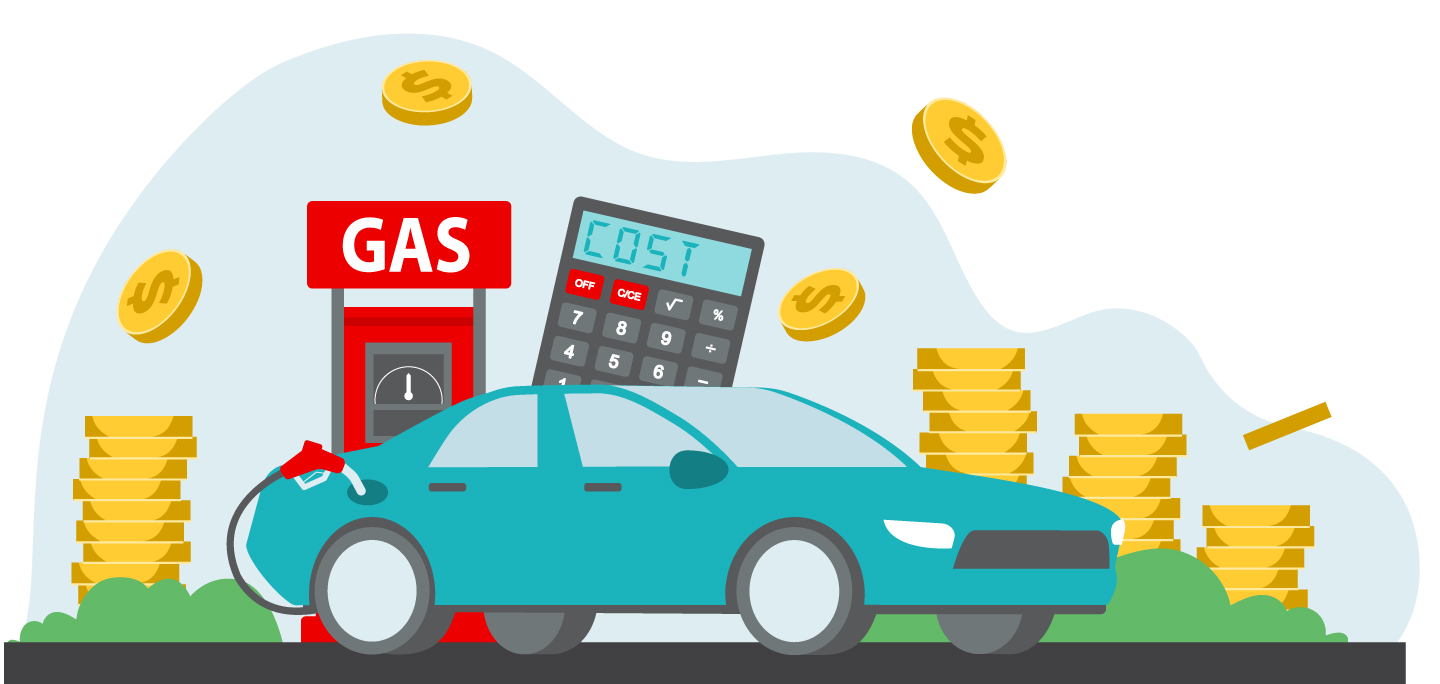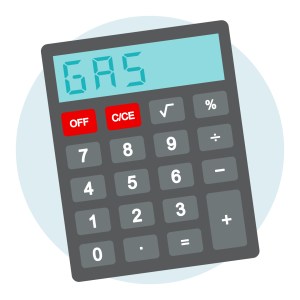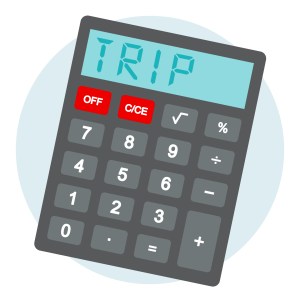
It’s easy to jump in the car and just drive, but when you’re taking a road trip or even starting a new commute, a little planning goes a long way.
Calculating the gas cost of your trip is a smart trick to budget travel expenses and there are a couple of routes you can take.
One is doing it by hand, which can be completed in a few simple steps and gives you some know-how, while the other is using a gas cost calculator. For that, you’ll need a few basic details about your vehicle.
Route A – Take 4 simple steps
Calculate your vehicle’s gas mileage

Fill up your gas tank and set the trip odometer to zero then drive as needed until it’s time to stop for gas again. When you next refuel, note the trip odometer reading to get the number of miles you’ve driven.
Alternatively, you can get this figure by writing down the overall odometer reading the first time you fill up and again the second time, with the difference being your miles driven.
Next, divide the mileage by the number of gallons of fuel you pumped during the second gas stop to find out your miles per gallon (mpg).
Know before you go: As you’re in the process of budgeting, keep in mind that driving habits and a vehicle’s condition affect gas mileage. Check out the suggestions at the end of this article to improve your mpg.
Work out the total distance of your trip
Whether you’re going point-to-point or taking a round trip, a quick look at your navigation app or online map resources will tell you how many miles the journey will be. Select your preferred route, consider traffic hot spots to avoid and, if you’re planning a road trip, think about any sights and detours you want to build into the trip.
Check the current price of gas
You may remember the price of gas from your last fill-up but prices can fluctuate a lot over time and by region, so that might not be a good guide. View the current national and regional gas prices provided by AAA to get an idea of what the price of gas will be for your journey, and where you’re likely to fill up.
Calculate the total gas cost of your trip

With miles per gallon, trip distance and the price of gas at your fingertips, calculate the gas cost for your trip as follows.
1. Divide the trip distance by your vehicle’s miles per gallon to discover how many gallons of gas you will need.
2. Multiply the number of gallons by the price of gas.
Gas cost formula:
(Total trip distance / mpg) x current price of gas = total gas cost
Example:
Let’s say you’re taking a 200-mile road trip, you’ve worked out your gas mileage to be 30 mpg and the current gas price is $3.25. Putting these figures into the formula shows the total gas cost to be:
(200 miles / 30 mpg) x $3.25 = $21.67
Route B – Use a gas cost calculator
Taking a different approach, there are a number of useful calculators that will give you the cost of a trip and even directions and information for savings on gas. The government’s energy department offers a fuel economy website that enables you to select your vehicle year, make, model and engine type, enter your start and finish points and any stopping-off places on the way, plus the percentage of city driving for the trip. Click to calculate and you’ll receive your fuel cost estimate, a map of the journey and directions. You can also enter additional vehicles to compare costs.
GasBuddy is another popular option. Type in your starting location, destination, a stop-off if you have one, and select whether you want to calculate a one-way or round-trip. Then select your vehicle’s year, make, model and engine type along with the fuel you use – regular, midgrade, premium or diesel. GasBuddy will give you the trip cost, distance and projected gallons used, as well as where to fill up and your potential savings from using recommended gas stations.
Other trip expenses to consider
Whichever option you choose, calculating the gas cost of a trip is a handy way to plan for your expenses and, while it is an estimate rather than an exact figure, it will help you to avoid an unexpected fuel bill at the end.
Remember that there are often other expenses, too. They include the likes of toll fees and, for longer journeys, meal breaks and accommodation, while unforeseen events like accidents and delays may crop up, adding miles and gas to your journey.
How to save on fuel costs

Good driving habits along with taking care of your vehicle can improve fuel economy, reduce the amount of gas going into your car and keep more dollars in your pocket. The government recommends a few ways to do just that, below.
Drive sensibly – Speeding, rapid acceleration and braking can lower gas mileage by 33% at highway speeds and 5% in towns, so anticipate traffic situations, keep an adequate distance from the vehicle in front and accelerate smoothly.
Remove excess weight – Avoid keeping unnecessary items in your vehicle, particularly heavy objects.
Avoid excess idling – Turning off the engine when parked will save a quarter to half a gallon of gas per hour depending on the vehicle and use of air conditioning.
Keep to the speed limit – This is also part of driving sensibly and safely. It’s useful to know that fuel economy generally reduces quickly at speeds above 50 mph.
Go for cruise control – In most cases, cruise control on the highway helps to achieve a steady speed and save gas.
Take off the roof rack – Removing a roof rack and using the trunk to carry items will improve a vehicle’s aerodynamics and reduce drag.
Use overdrive gears – Overdrive gearing, which provides a high-gear mode, lowers engine speed and reduces gas consumption.
Look after your vehicle – Solid vehicle maintenance helps to reduce gas costs by keeping a vehicle running smoothly. Making sure the engine is tuned and the tires are properly inflated, using the manufacturer’s recommended engine oil and replacing the air filter if it becomes clogged all contribute to proper maintenance.
The road to more resources
If you’d like to know more about managing your auto expenses, explore the tools, videos and further articles across our Learning Center.



